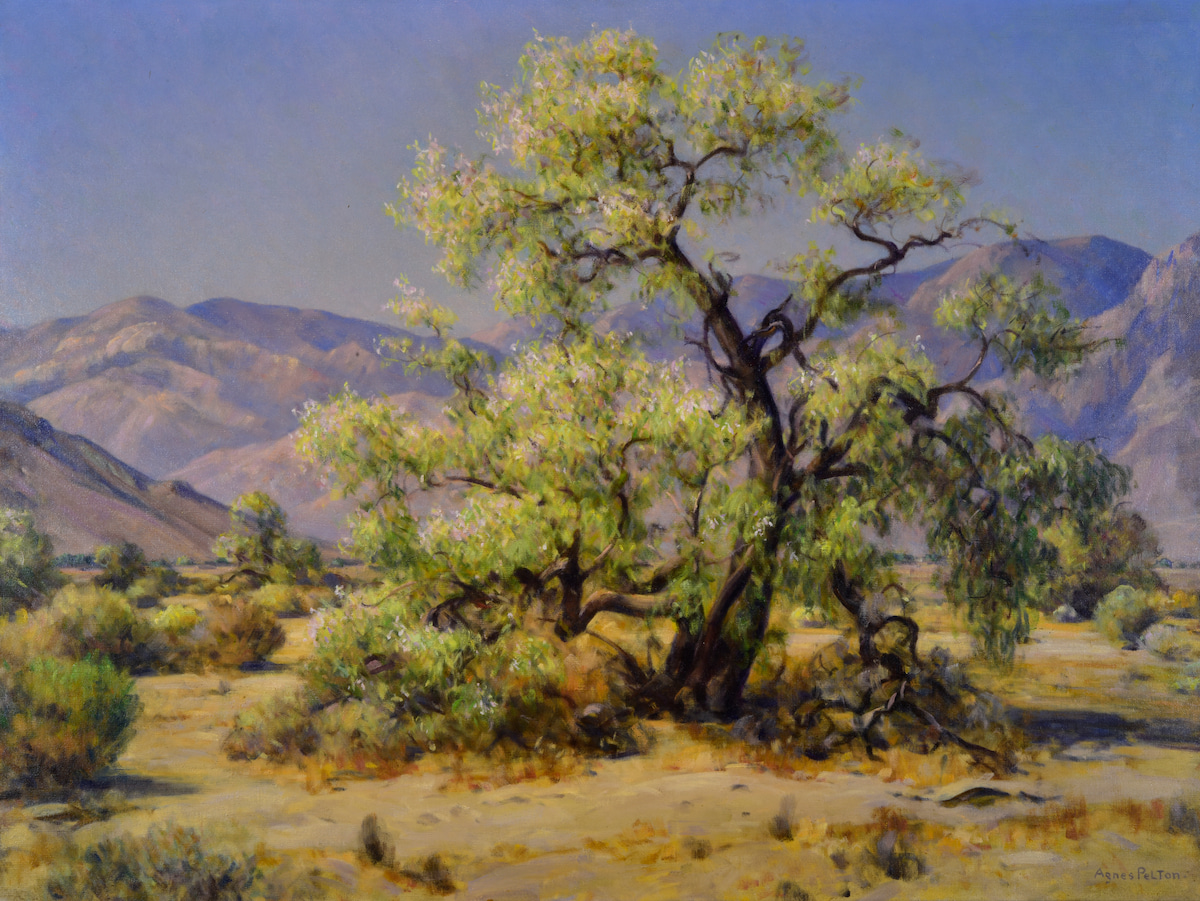Nature of the Desert
About 100 miles east of Los Angeles, one enters the Coachella Valley after passing through the San Gorgonio Pass. This Pass is flanked by two mountain peaks rising nearly 11,000 feet each, Mount San Jacinto and San Gorgonio. They form the western barrier of the valley and act as a “rain shadow,” providing the Colorado Desert with a meager annual rainfall of three to five inches.
Hardy native desert trees are few in number and must adapt to the extremes of this arid region to survive. Enveloped in its mantle of ultramarine pea-shaped flowers, the smoke tree has become emblematic of the area. With its floral profusion and intense color—usually for only a few weeks in June— the smoke tree comes alive with the buzz of bees. Smoke trees became a favorite subject for Pelton; at times she concentrated on them exclusively. In a letter to her friend Jane Levington Comfort dated June 13, 1935 she wrote: “Hot it is! About 112 degrees. Smoke trees in bloom . . . I’m doing nothing now except work on smoke trees, early and late. ”

Desert Willow, 1950s, oil on canvas, 34 1/2 × 44 inches. Collection of Dr. Nancy Strow Sheley, L2020.12.
According to late Pelton scholar and former Palm Springs Art Museum curator Michael Zakian, Pelton “could never dismiss her landscapes as simple commercial necessities. As in all her artwork, she identified intensely with the subject and saw it as another way to record her belief in the world’s joys and mysteries. She wrote in 1935 that painting these works was a ‘happy occupation, but very strenuous physically’.”
